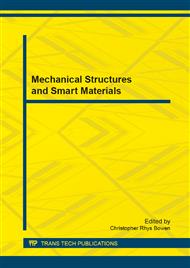p.54
p.58
p.63
p.67
p.71
p.75
p.80
p.84
p.90
Surface Roughness Scrutinizaton with RIE CF4+Argon Gaseous on Platinum Deposited Wafer
Abstract:
Aluminium metallization has a disadvantage when it comes to high-end applications as it cannot withstand the high temperature and pressure. This paper studies the factors that affect the surface roughness on a Platinum deposited wafer after reactive ion etching (RIE) using a combination of CF4 and Argon gaseous. A total of three controllable process variables, with 8 sets of experiments were scrutinized using a systematically designed design of experiment (DOE). The three variables in the investigation are ICP power, Bias power, and working pressure. The estimate of the effect calculated for ICP power, Bias power, and working pressure are-6.3608, -3.2858, and-5.394 respectively. All three factors gave negative effects. This implies that the surface roughness decreases when ICP power, Bias power, and working pressure is high. The ICP Power is the most influential factor followed by working pressure, and bias power.
Info:
Periodical:
Pages:
71-74
Citation:
Online since:
January 2014
Price:
Сopyright:
© 2014 Trans Tech Publications Ltd. All Rights Reserved
Share:
Citation:


